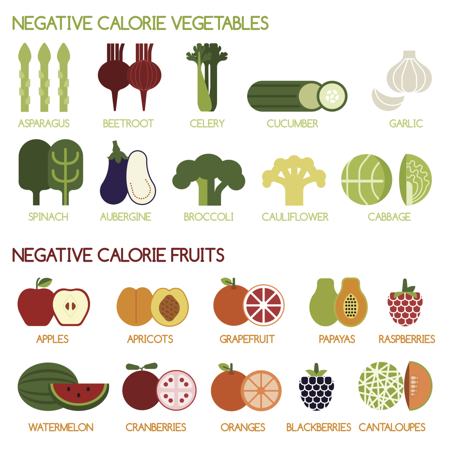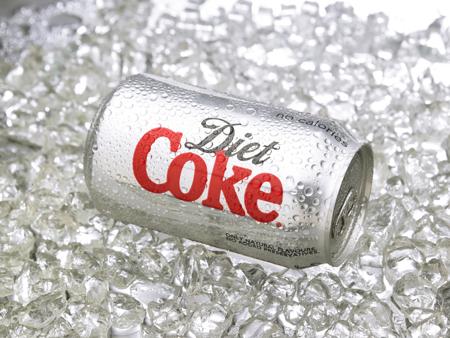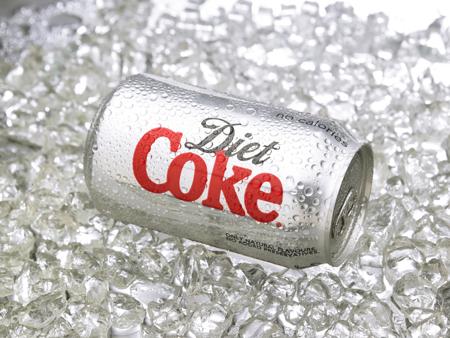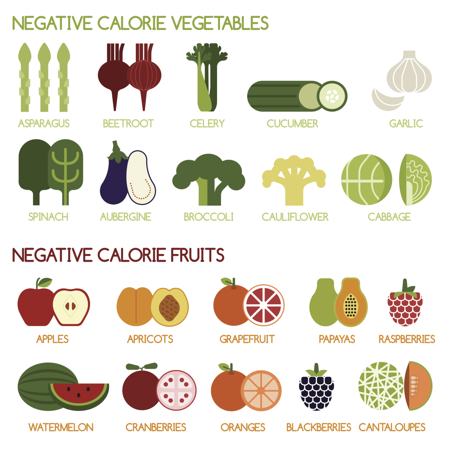Lose Weight > Weight Loss Recipes > Low Calorie Diet > Are Negative-calorie Foods a Myth or a Fact? Find Out NOW
Are Negative-calorie Foods a Myth or a Fact? Find Out NOW
 Are negative-calories foods real? Before discussing this, we need to know the concept of calories related to food. A calorie is a unit of energy, and in terms of food intake refers to the amount of heat energy released when the food is broken down in the human body. Now, according to proponents of 'negative-calorie' foods, the body expends more energy to digest these foods. In simple words, the body has to work harder to initiate chemical breakdown of the food into smaller units, which purportedly translates into higher calories burnt (than present in the food) during the major work of digestion. So, the body supposedly is left with net calorie loss after digesting these foods, which eventually leads to weight loss.The FactThe amount of calories (energy) used by the body during digestion is known as the thermal effect of food, which is claimed to be more than the calories supplied by the food under consideration. This idea is too simple to understand, but unfortunately, has no scientific backing. In fact, in case of vegetables and fruits, studies show that the thermal effect of food is just 5 to 10% of the total calories present in the food. Even in case of protein foods, the body uses up to 30% of energy from calorie-intake. So, as wrongly believed, 'calorie expenditure' to fuel digestion never goes beyond 100% of the calories present in food. Meaning, more calories are never spent on eating the food than actually present in the food in question.Negative Calories - A MythA large stick of celery only has 10 calories, and so, according to proponents of the theory of negative-calorie foods, the body should expel more calories to digest the celery. However, in reality, the calorie expenditure is just 1 or 2 calories. Similarly, one cup of balls of watermelon has only 45 calories, but the energy expended on digestion is pretty less; 5 to 10 calories. Consider an orange, which is claimed to cause net calorie deficit after digestion. A medium-sized orange provides around 62 calories, but it takes only 6 to 12 calories to digest. So, in reality, one can see that the calories used to digest these so-called negative-calorie foods is far less than they offer.
Are negative-calories foods real? Before discussing this, we need to know the concept of calories related to food. A calorie is a unit of energy, and in terms of food intake refers to the amount of heat energy released when the food is broken down in the human body. Now, according to proponents of 'negative-calorie' foods, the body expends more energy to digest these foods. In simple words, the body has to work harder to initiate chemical breakdown of the food into smaller units, which purportedly translates into higher calories burnt (than present in the food) during the major work of digestion. So, the body supposedly is left with net calorie loss after digesting these foods, which eventually leads to weight loss.The FactThe amount of calories (energy) used by the body during digestion is known as the thermal effect of food, which is claimed to be more than the calories supplied by the food under consideration. This idea is too simple to understand, but unfortunately, has no scientific backing. In fact, in case of vegetables and fruits, studies show that the thermal effect of food is just 5 to 10% of the total calories present in the food. Even in case of protein foods, the body uses up to 30% of energy from calorie-intake. So, as wrongly believed, 'calorie expenditure' to fuel digestion never goes beyond 100% of the calories present in food. Meaning, more calories are never spent on eating the food than actually present in the food in question.Negative Calories - A MythA large stick of celery only has 10 calories, and so, according to proponents of the theory of negative-calorie foods, the body should expel more calories to digest the celery. However, in reality, the calorie expenditure is just 1 or 2 calories. Similarly, one cup of balls of watermelon has only 45 calories, but the energy expended on digestion is pretty less; 5 to 10 calories. Consider an orange, which is claimed to cause net calorie deficit after digestion. A medium-sized orange provides around 62 calories, but it takes only 6 to 12 calories to digest. So, in reality, one can see that the calories used to digest these so-called negative-calorie foods is far less than they offer.Yet, these vegetables and fruits are helpful in reducing total calorie intake. This is because, they are high in fiber, which is known to slow digestion as well as keep the stomach fuller for a longer amount of time. This actually works in cutting down food cravings.On the whole, there is no such thing as negative-calorie foods, but that does not mean vegetables and fruits are not good to lose weight. There is no doubt that these foods are low in calories; hence, you can always include them in your low-calorie diet to drop those extra pounds.
Related Articles
-
Low-Calorie Filling Foods
Do you always feel hungry and in order to appease your hunger, munch o
-
1000-calorie Diet Menu for 7 Days
Disclaimer: This article is for informative purposes only and does not
-
1200 Calorie High Protein Diet
1200 calories is quite a low calorie count when compared with the stan
-
100 Calorie Snacks
The 100 calorie diet is very different from the usual low calorie diet
-
1200 Calorie Menu
As more and more people are becoming calorie conscious, more and more
-
Low Calorie Oatmeal Cookies
When you are on a diet, it becomes very difficult not to give in to ce


